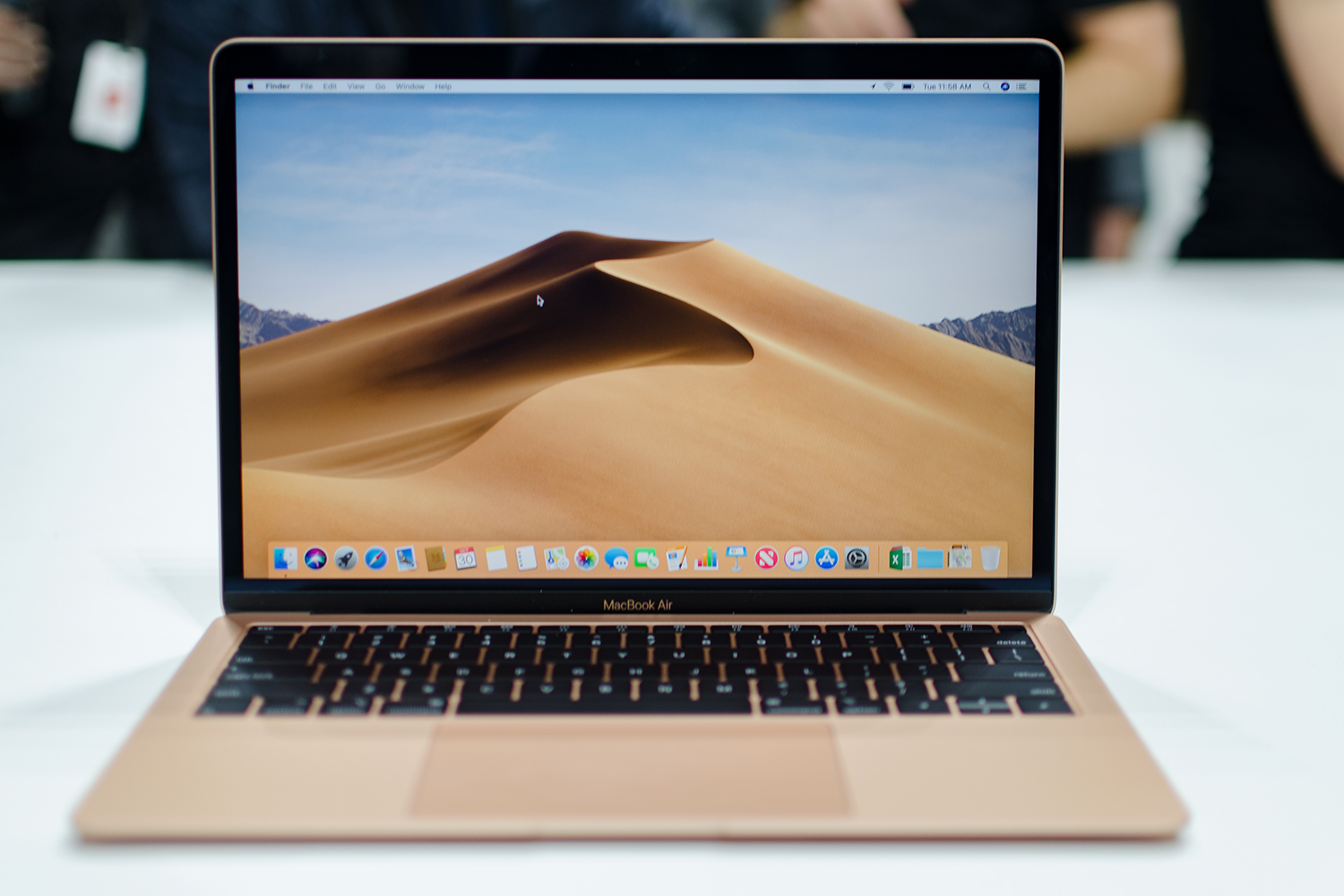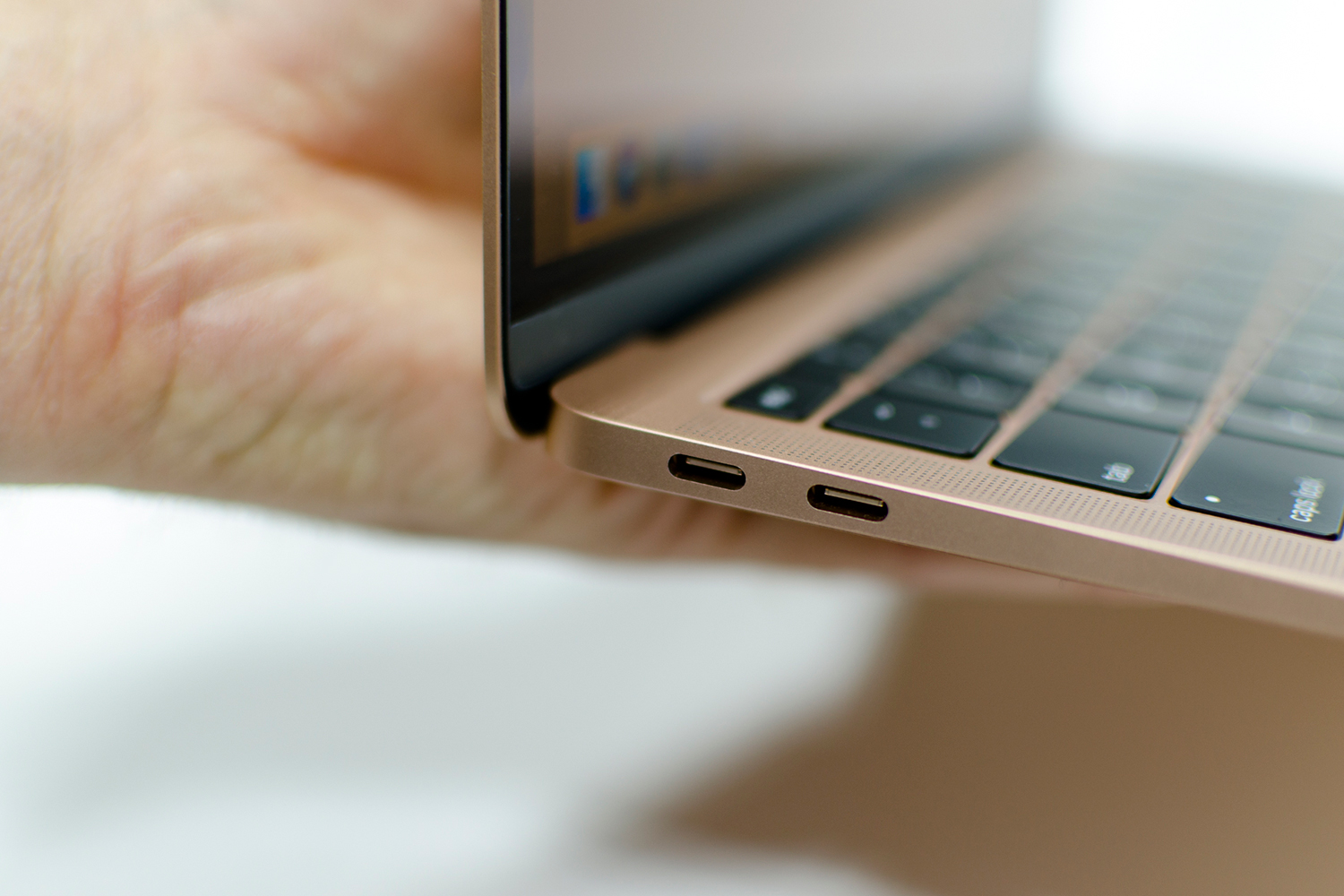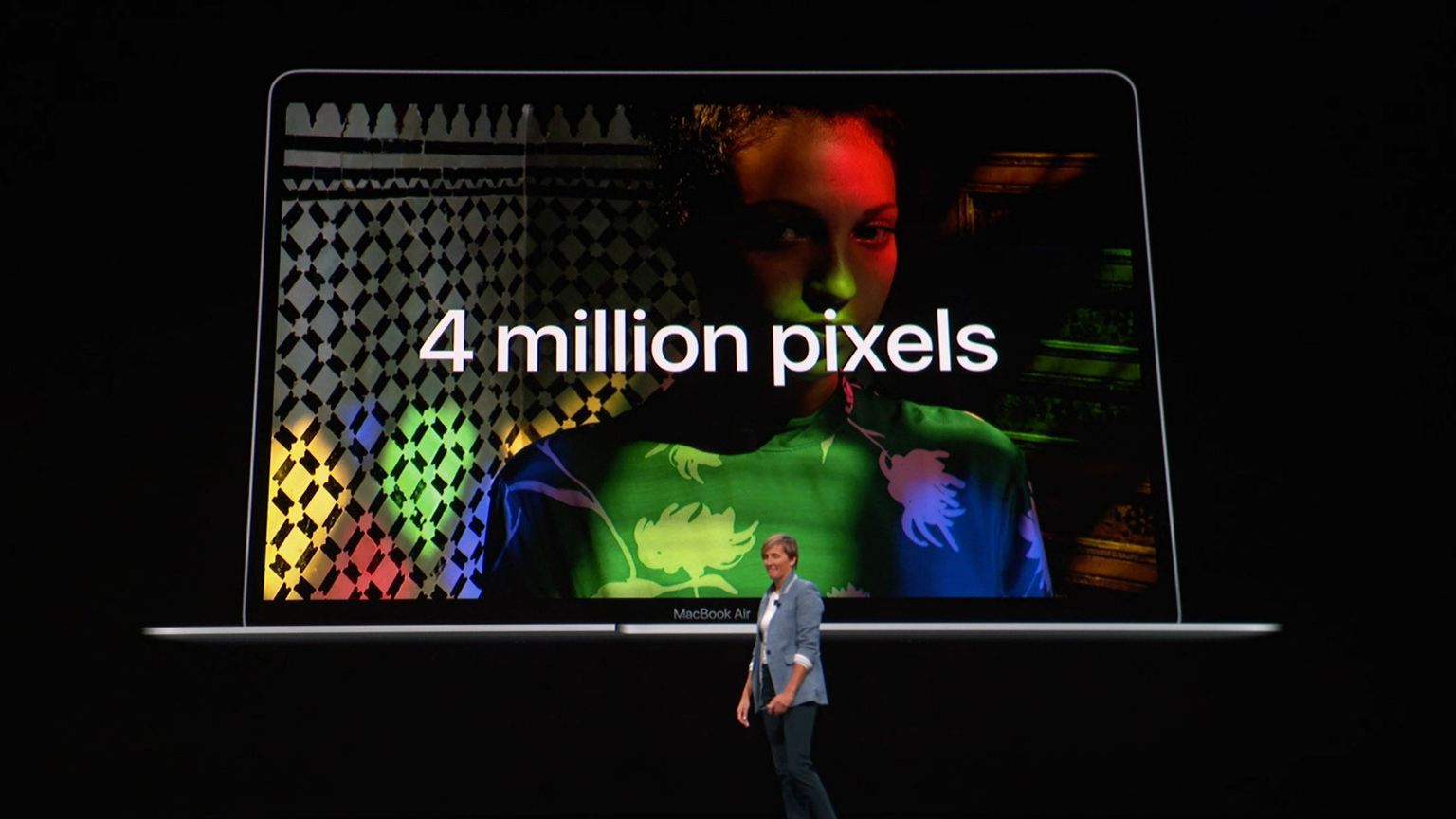
While Apple’s higher-range MacBook Pros received an update earlier this year, the rest of Apple’s notebook lineup has been in desperate need of an overhaul. Prior to Apple’s scheduled event at the end of October, rumors have been swirling as to which MacBook model would get refreshed next.
At its October 30 event in Brooklyn, Apple diverted its attention to the MacBook Air. Initially, earlier rumors suggested that the updated laptop could fall under either the MacBook or the MacBook Air range. The most unfortunate aspect that early rumors got wrong was pricing. This year’s MacBook Air isn’t as affordable as we’d hoped for. Instead, at $1,200, it’s $200 more expensive than the previous Air and $100 cheaper than the $1,300 MacBook.
Oct. 30 event in Brooklyn

Apple had sent out invitations to an event in New York without giving any additional details. However, ahead of the Brooklyn-based event, a number of incidents occurred — including a delayed education order, filings with new model numbers at the Eurasian Economic Commission, and a recent Bloomberg report — hinted that new a MacBook Air, Mac Mini, and iMacs could potentially be announced.
Most of those early speculations and theories proved true. At its event, Apple ended up announcing a completely redesigned MacBook Air, a new Mac Mini, and new iPad Pro models. The iMac, sadly, was not updated this time around, but both the Air and the Mini now ship with 8th-gen Intel Coffee Lake processors.
Lighter than (the previous) Air

Apple showed off some noticeable visual changes to this year’s MacBook Air. Even though the laptop retains its wedge-shaped unibody aluminum design, the new MacBook is slimmer and more compact, thanks to narrower bezels this year. This brings the Air to 11.97 x 8.36 x 0.61 inches and 2.75 pounds in weight.
The redesign also introduced top-firing stereo speakers positioned on either side of the keyboard. Apple is using its butterfly switch design for the keys, which was introduced on the MacBook. Like the recently refreshed MacBook Pro, Apple is using the third-generation keyboard design, which should help prevent early reports of sticky keys on older Mac notebooks with butterfly key switches.
Another new change is that Apple has replaced all of the ports on the MacBook Air with two Thunderbolt 3 over USB-C ports. This will give the MacBook Air a boost in graphics performance if you choose to add an optional eGPU. With that much power, the 2018 MacBook Air will be a contender for title of best MacBook?
New processor
Prior to the refresh, the MacBook Air was woefully stuck on Intel’s fifth-gen chip design, but with the refresh, Apple brought the 2018 Air into the modern age with Intel’s more powerful 8th-Generation silicon, as previously expected. However, rather than using the Kaby Lake Refresh design, both the refreshed MacBook Air and Mac Mini use Intel’s Coffee Lake architecture. The Air comes with a dual-core 1.6GHz Core i5 design, while the Mini tops out with a six-core Intel Core i7 processor.
This year, Apple only offers one processor configuration on the MacBook Air, so you’ll only be able to choose memory and storage configurations at the time of purchase. The system can be configured with up to 16GB of
Though it didn’t materialize on the 2018 MacBook Air, Apple analyst Ming-Chi Kuo reported that Apple wants to transition from Intel processors to its own chips (already used in many iOS devices). This will likely take a few years, though the potential switch to ARM designs could give Apple full control of the Mac hardware and software design, which may allow for additional efficiency.
Even thinner bezels

Bezels are officially the uncoolest kid at the party, so it’s no surprise to see brands cutting them out. The new iPhone models, for example, have as little bezel as they can get away with as a way to increase screen size. Early reports that Apple was looking at a similar tactic for its new MacBook Air came out to be true.
Shrinking the bezels, doing away with the matte screen, and introducing an edge-to-edge glass display give the Air more modern aesthetics. It also allows the Air to have a smaller footprint, which will be appealing for travelers and business users.
Unlike Dell, which popularized the minimal bezel design, the MacBook Air maintains the top placement of its 720p HD FaceTime camera, which can now be used for making and receiving group video calls on MacOS Mojave.
Retina display

True to earlier reports from Bloomberg and Apple analyst Ming-Chi Kuo, Apple also bumped up the resolution of the MacBook Air’s display. The laptop ships with a 2,560 x 1,600 resolution display, giving it a similar 227 PPI resolution as Apple’s MacBook. Like the rest of the MacBook family, the Air also makes use of a 16:10 aspect ratio display.
Touch ID included, the Touch Bar left off

The Touch Bar was a hit-or-miss feature on the last crop of MacBook Pros. We weren’t exactly big fans of the feature, which seemed promising on paper but wasn’t all that convenient in daily use, prompting analyst Ming-Chi Kuo to speculate that the Touch Bar is gone for good. While we don’t know if that will be true in the future, the 2018 MacBook Air does not come with a Touch Bar.
Instead, it just has a Touch ID sensor, which can be used for password-less logons.Touch ID and encryption are both handled by a new Apple-designed T2 processor on the MacBook Air, similar to other recently refreshed Mac models.
Better performance comes at a cost
One phrase that kept popping up in early rumors about the new MacBook Air refresh is “low-cost,” and there were speculations that the laptop could even be priced around $1,000. However, that wasn’t the case, and the new MacBook Air’s starting price of $1,199 makes it $200 more expensive than the model it replaces.
At that price, the Air will likely compete in the same market as Apple’s similarly priced $1,299 MacBook. Both
Editors' Recommendations
- The XPS 16 is fighting an uphill battle against the MacBook Pro
- MacBook Pro 16 vs. MacBook Pro 14: The important differences
- Does your Mac really need antivirus software? We asked the experts
- Best refurbished MacBook deals: Get a MacBook Air for $140 and more
- Best laptop deals: Save on the Dell XPS 14, MacBook Pro 16 and more




